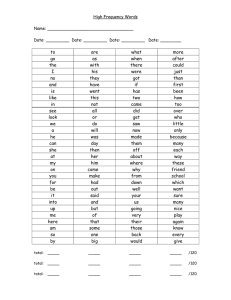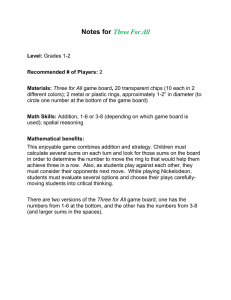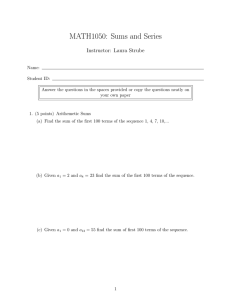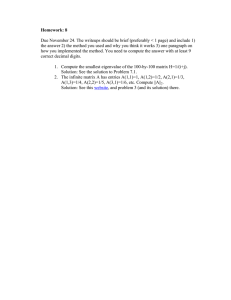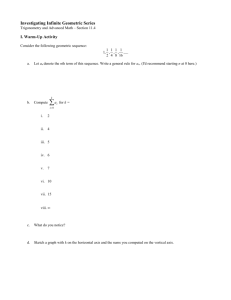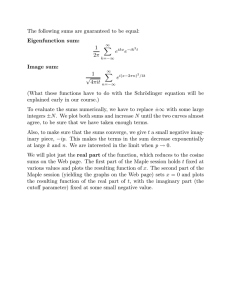MITOCW | MIT18_01SCF10Rec_72_300k
advertisement
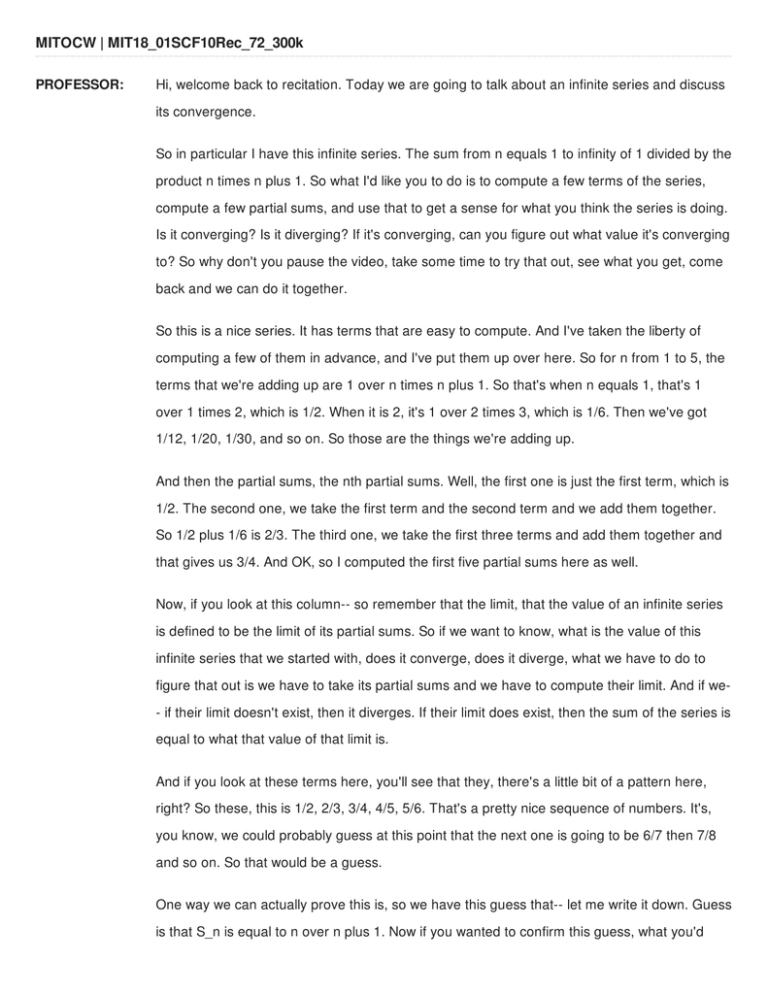
MITOCW | MIT18_01SCF10Rec_72_300k PROFESSOR: Hi, welcome back to recitation. Today we are going to talk about an infinite series and discuss its convergence. So in particular I have this infinite series. The sum from n equals 1 to infinity of 1 divided by the product n times n plus 1. So what I'd like you to do is to compute a few terms of the series, compute a few partial sums, and use that to get a sense for what you think the series is doing. Is it converging? Is it diverging? If it's converging, can you figure out what value it's converging to? So why don't you pause the video, take some time to try that out, see what you get, come back and we can do it together. So this is a nice series. It has terms that are easy to compute. And I've taken the liberty of computing a few of them in advance, and I've put them up over here. So for n from 1 to 5, the terms that we're adding up are 1 over n times n plus 1. So that's when n equals 1, that's 1 over 1 times 2, which is 1/2. When it is 2, it's 1 over 2 times 3, which is 1/6. Then we've got 1/12, 1/20, 1/30, and so on. So those are the things we're adding up. And then the partial sums, the nth partial sums. Well, the first one is just the first term, which is 1/2. The second one, we take the first term and the second term and we add them together. So 1/2 plus 1/6 is 2/3. The third one, we take the first three terms and add them together and that gives us 3/4. And OK, so I computed the first five partial sums here as well. Now, if you look at this column-- so remember that the limit, that the value of an infinite series is defined to be the limit of its partial sums. So if we want to know, what is the value of this infinite series that we started with, does it converge, does it diverge, what we have to do to figure that out is we have to take its partial sums and we have to compute their limit. And if we- if their limit doesn't exist, then it diverges. If their limit does exist, then the sum of the series is equal to what that value of that limit is. And if you look at these terms here, you'll see that they, there's a little bit of a pattern here, right? So these, this is 1/2, 2/3, 3/4, 4/5, 5/6. That's a pretty nice sequence of numbers. It's, you know, we could probably guess at this point that the next one is going to be 6/7 then 7/8 and so on. So that would be a guess. One way we can actually prove this is, so we have this guess that-- let me write it down. Guess is that S_n is equal to n over n plus 1. Now if you wanted to confirm this guess, what you'd have to do is you have to just figure out how could you prove that. Well, one thing you can do is you can say, well, S n plus 1 is equal to S_n plus the next term, right? So in our case, S n plus 1 is equal to S_n plus the next term, the n plus first term, which in our case is 1 over n plus 1 times n plus 2. So, all right, so that's not maybe obvious what to do with this, but you could split this up, really you can split it up by partial fractions. And you can write this as say S_n plus-- so if you split this up by partial fractions, what you'll get is that it's exactly equal to 1 over n plus 1 minus 1 over n plus 2. And from here it's easy to see that, well, if S_n is equal to n over n plus 1, then this will be equal to 1 minus 1 over n plus 2, which is n plus 1 over n plus 2. And so using the process known as mathematical induction, you have that it follows for all values of n. So because of this nice expression for the term, it's easy to see that this pattern will continue forever. OK, and so that, you know, that's just a sketch of how you would prove this. Now once you've proven this, it's easy to see that the-- once you know that this is true, it's easy to see what this limit is, right? As n goes to infinity, this just approaches 1 and that means the series converges and the limit of the series is 1. So here we have a nice example of a series that converges and where it actually is possible to compute the limit of this series. This isn't possible for most, for all series or even for most series. Even ones with fairly nice terms, it's often very difficult to figure out what their limit is, but in this case it's not hard to do and we have precisely that the value of the series is 1. So I'll end there.
